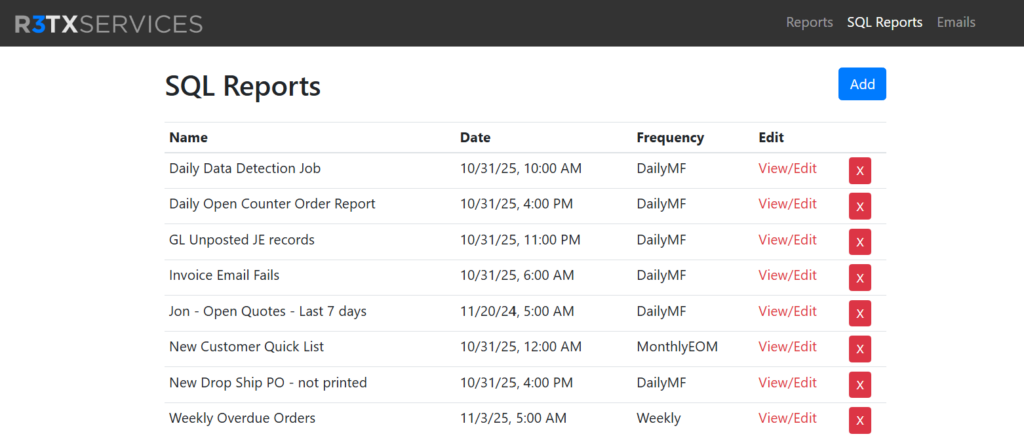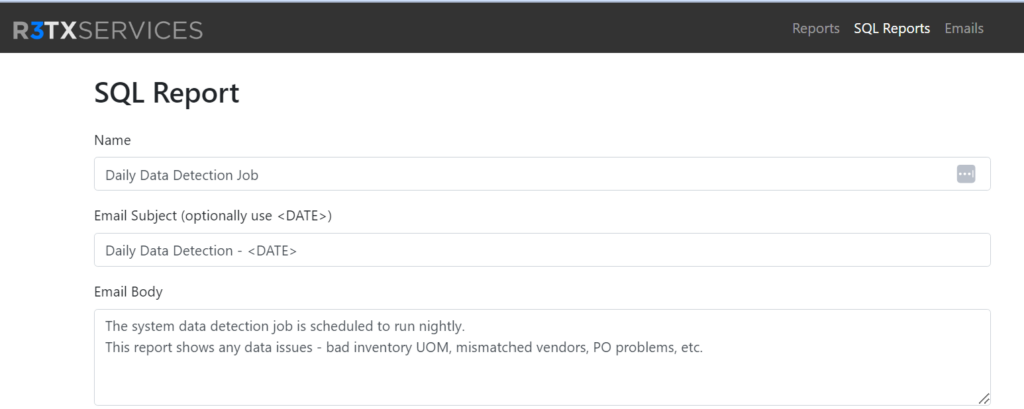SQL Reports
Since TrulinX is based on the SQL Server environment, R3TX custom SQL queries allow the use of simple or complex data queries to find critical TrulinX data and send that data by email in an attached Excel file which can be easily opened in Excel at the user’s workstation.
SQL queries allow data from multiple related files to be ‘joined’ into a single output file and delivered as an Excel attachment.
These SQL reports work well for ‘exception’ reports – if no data found, no report is sent. An example would be the Missing Data Detection process. If there is no missing or mis-configured data records, no report is sent. This works well for data reviews and missed procedures, such as an unprinted actual purchase order.
If your company is already using some of the pre-defined Excel queries created by TrulinX support, the SQL code from those reports can be installed in a R3TX query with a few adjustments.
Just to be clear, no one on your staff needs to become proficient in creating SQL queries. You can draw on the resources of R3TX or you can commission the TrulinX Support team to create custom SQL queries and provide them to be installed in R3TX.
There is literally no limit to how many SQL reports can be configured in R3TX. Realistically, these would be reports that should be run on a scheduled basis. For special inquiries, the Excel-based SQL reports are a better solution.
Since access to the SQL system poses a potential confidentiality risk, we work with your management team to establish the proper guidelines for SQL access.
This is a sample library of potential SQL reports:

Each SQL report can be created and scheduled to run as defined:

Each SQL Query Report can be sent to multiple recipients on a schedule.
